Are you curious about the animal kingdom’s unexpected talent for psychological prowess? While we often think of manipulation as a distinctly human trait, there are several animals that have mastered the art of influencing us, often in ways we don’t immediately recognize. These creatures have fine-tuned their abilities over time, leveraging their adorable, clever, or downright sneaky behaviors to get what they want from humans. Join us as we unveil the surprising skills of these fascinating animals, who have learned to turn the tables on their supposed masters.
1. Cats: Masters of the Mysterious Purr

Cats are notorious for their independence, but they secretly have an ace up their furry sleeves when it comes to manipulating humans: their purrs. While these soft vibrations can convey contentment, they are also expertly used to get what they want. According to Scientific American, some cats have learned to embed a cry within their purr that mimics the frequency of a human baby’s cry, triggering a nurturing response from humans. This sound is hardwired to tug at our heartstrings, prompting us to provide food, attention, or affection almost instinctively.
Moreover, cats often use their eyes and body language to communicate their desires. A slow blink from a cat, often referred to as a “kitty kiss,” can melt a human’s heart and is often reciprocated with affection. Cats learn to associate certain human behaviors, like opening a can or a specific cupboard, with feeding times. They may start to “train” their humans by leading them to these spots or meowing persistently at the right times. Their persistence and subtle cues often make humans feel like they’re in charge, but in reality, it’s the cat pulling the strings.
2. Dogs: The Loyal Manipulators

Dogs have long been considered man’s best friend, and they have become exceptionally skilled at reading human emotions and responding accordingly. Through domestication, dogs have evolved to be highly attuned to human facial expressions and vocal tones, allowing them to react in ways that endear them to their owners. They often employ the “puppy dog eyes” look, complete with raised eyebrows and a tilted head, to appear irresistibly cute, prompting humans to give in to their demands for treats or attention. This manipulation is a learned behavior and an evolved trait; dogs have developed specific facial muscles to produce these expressions, according to an article in ABC News.
Beyond facial expressions, dogs utilize their understanding of human routines to their advantage. They quickly learn the timing of daily activities, such as when it’s time for a walk or meal, and will nudge, bark, or bring their leash to remind you if you forget. Dogs can also feign innocence or guilt, looking away or adopting a “guilty” posture when caught in the act, which often results in less severe punishment from their owners. This ability to manipulate human responses makes dogs incredibly adept at getting what they want, often leaving their humans none the wiser.
3. Parrots: The Chatty Tricksters
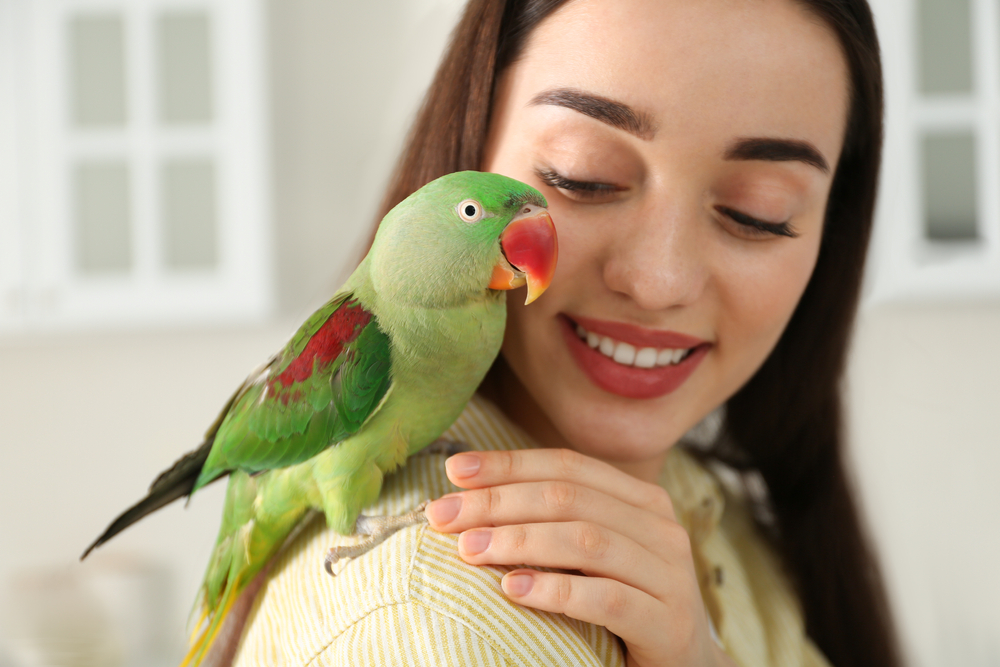
Parrots are known for their remarkable ability to mimic human speech, but this talent goes beyond mere imitation; it’s often used to manipulate their human companions. By learning to say key phrases like “hello,” “I love you,” or even “give me a treat,” parrots can elicit specific responses from their owners. This vocal mimicry is not just for fun; it’s a strategic tool that parrots use to get attention, food, or playtime. According to National Geographic parrots and macaws can associate words with specific human actions, using this knowledge to their advantage.
In addition to their vocal skills, parrots are incredibly observant and quickly learn household routines. They might start whistling or talking when they see you preparing food, associating these actions with receiving a treat. Their intelligence allows them to play more complex games with their humans, like pretending to be uninterested to lure a person closer, only to make a sudden playful move. Parrots are also known to use body language, such as fluffing their feathers or tapping their beaks, to express desires, ensuring they are an interactive and demanding pet. Their ability to entertain and manipulate makes them both fascinating and challenging companions.
4. Horses: The Gentle Persuaders

Horses may not seem like the typical manipulators, but their size and demeanor allow them to subtly influence human behavior. These majestic creatures are experts at reading human emotions and body language, allowing them to respond in ways that can coax specific reactions. For example, a horse might nuzzle a person gently to seek affection or a treat. This gentle persuasion often melts the human’s resolve, leading to a rewarding interaction for the horse.
Moreover, horses have a phenomenal memory, especially for routines and people. They can anticipate feeding times, recognize the sound of a familiar person’s voice, and even remember specific cues that lead to pleasant experiences like grooming or riding. This understanding allows them to “train” their humans to maintain consistent schedules that benefit the horse’s preferences. Additionally, horses use subtle body language to communicate discomfort or contentment, which humans often respond to by adjusting their actions to meet the horse’s needs. This intricate dance of communication showcases the horse’s ability to subtly influence human behavior, ensuring their comfort and happiness.
5. Dolphins: The Ocean’s Con Artists

Dolphins are known for their intelligence and playful nature, but they are also skilled at manipulating humans to get what they want. In captivity, dolphins have been observed using their charm and wit to gain extra food or enrichment activities from their trainers. They do this by performing tricks or engaging in behaviors that they know will elicit a positive response. Wild dolphins are no different; they often engage in playful interactions with humans, using their natural charisma to encourage humans to feed them or follow them to interesting locations.
Beyond their playful antics, dolphins have a remarkable ability to understand human intentions. They can sense when a human is trying to help or harm them and will react accordingly. This understanding allows dolphins to build strong relationships with humans who interact with them regularly, using those bonds to secure their needs. Moreover, dolphins use complex vocalizations and body language to communicate their desires, often leading humans to interpret these signals in ways that benefit the dolphins. Their ability to manipulate human behavior through charm and intelligence makes dolphins one of the most captivating marine manipulators.
6. Elephants: The Empathetic Influencers
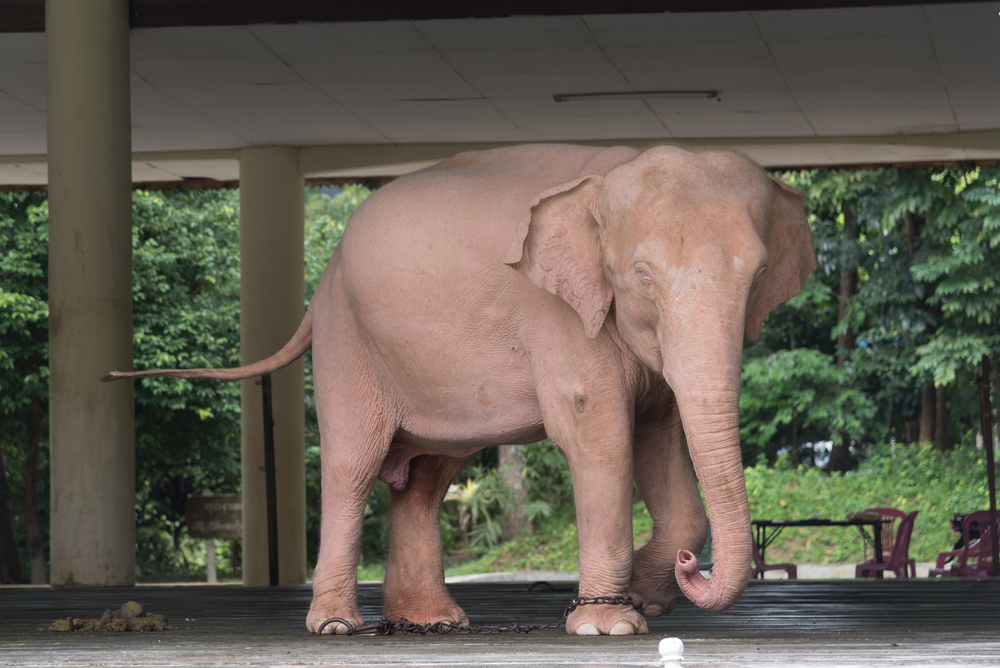
Elephants are renowned for their intelligence and deep emotional capacity, traits that they use to influence human behavior in subtle yet powerful ways. These gentle giants are capable of forming strong bonds with humans, often using their empathy to elicit care and attention. When an elephant senses a human’s distress, it may approach gently, offering a comforting presence that prompts a nurturing response. This empathetic approach can sway humans to provide more care and attention, further strengthening the bond.
In addition to their emotional intelligence, elephants possess an impressive memory, especially when it comes to positive or negative experiences with humans. They can remember specific individuals and the interactions they’ve had, using this knowledge to either build trust or avoid certain people. Elephants are also known to use tools and environmental features to achieve their goals, sometimes enlisting human help to access resources like food or water. By leveraging their intelligence and empathy, elephants can subtly influence human actions, ensuring their well-being and forging lasting relationships.
7. Raccoons: The Urban Opportunists
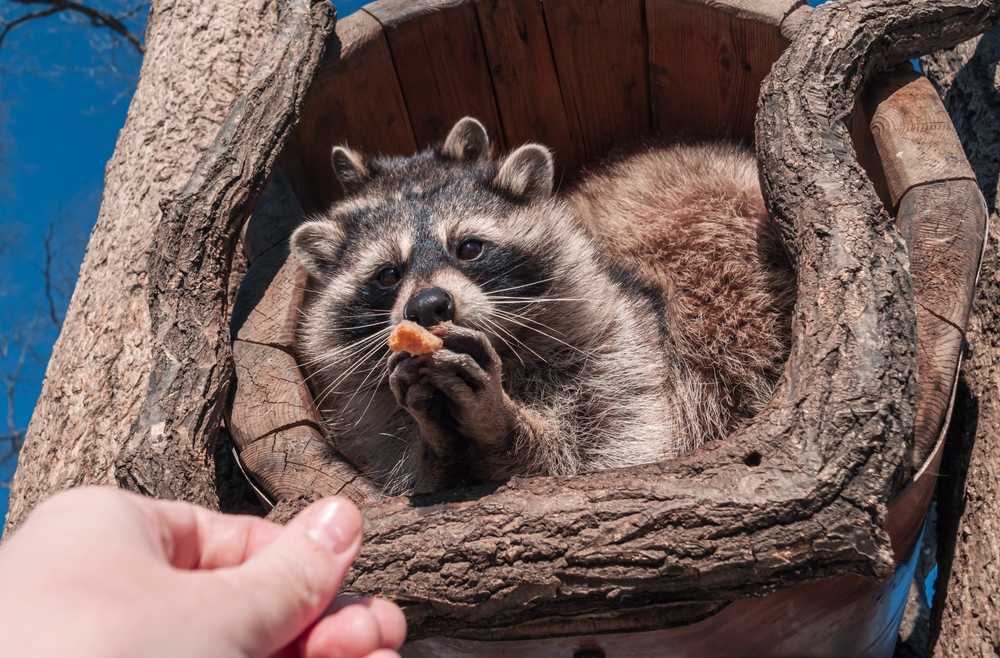
Raccoons have gained a reputation as clever urban dwellers, using their intelligence and dexterity to navigate human environments effectively. These masked bandits are experts at finding food in urban areas, often raiding garbage cans and bird feeders with remarkable skill. They’ve learned to associate human activity with potential food sources, frequently observing and adapting to human routines to maximize their opportunities. This ability to exploit human behaviors and environments has earned them a spot as one of nature’s most adaptable manipulators.
Beyond their scavenging skills, raccoons are known for their problem-solving abilities. They can open latches, unscrew jars, and even bypass some animal-proof containers, showcasing their impressive dexterity and intelligence. Raccoons also use a keen sense of observation to learn from both their own experiences and the behaviors of other raccoons, quickly adapting to changes in their environment. Despite being viewed as nuisances, raccoons’ cleverness and adaptability highlight their ability to manipulate human surroundings to suit their needs, demonstrating their impressive survival skills in urban landscapes.
8. Crows: The Feathered Strategists
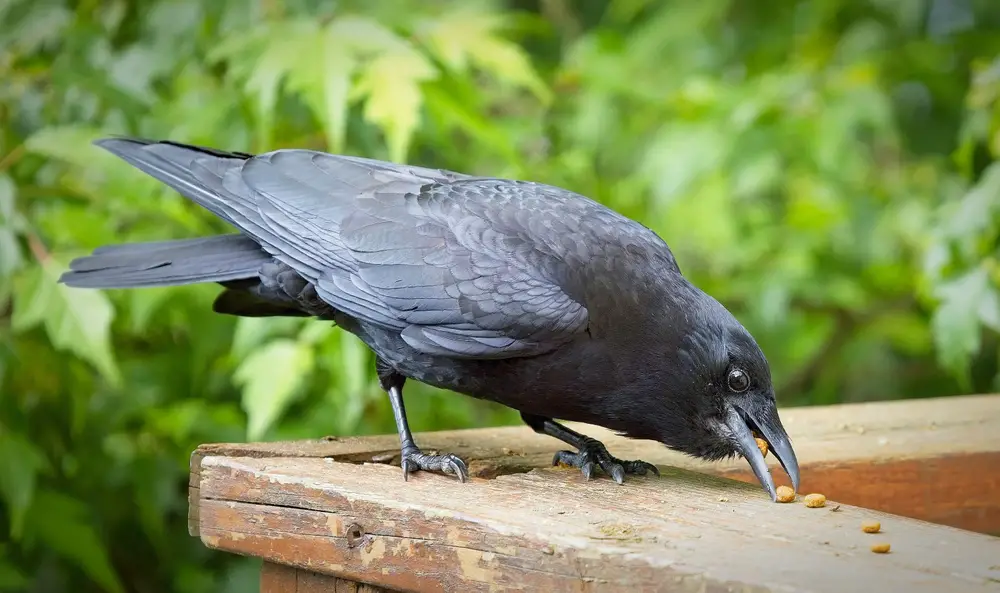
Crows are known for their intelligence and problem-solving capabilities, often using their skills to manipulate human environments to their advantage. These clever birds have been observed using tools, such as sticks or leaves, to extract food from hard-to-reach places, demonstrating their ability to plan and execute complex tasks. Crows are also known to drop nuts onto busy roads, waiting for cars to crack them open before swooping down to retrieve the contents. This strategic use of human environments highlights their ability to understand and exploit human activity for their benefit.
In addition to their problem-solving skills, crows have excellent memories and social structures, allowing them to learn and teach survival strategies. They can recognize individual humans, often remembering those who pose a threat or offer food, and communicate this information to other crows. This social intelligence allows them to form alliances and avoid dangers, showcasing their ability to influence human interactions indirectly. By leveraging their intelligence and social dynamics, crows excel at navigating human environments, ensuring their survival and success in a rapidly changing world.
9. Capuchin Monkeys: The Small but Mighty Manipulators
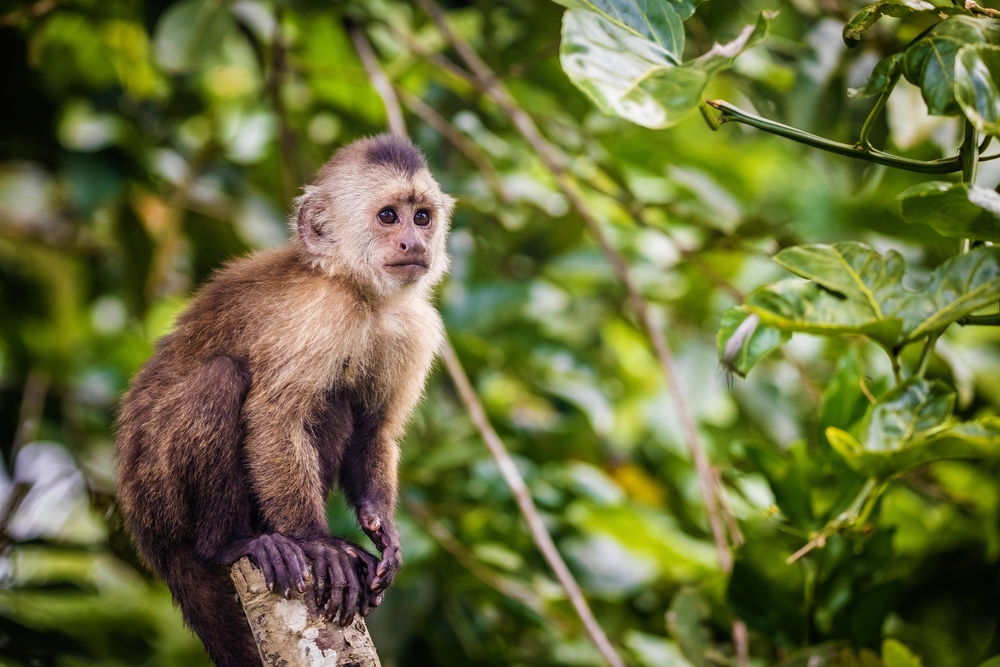
Capuchin monkeys are small primates with a knack for using their intelligence and dexterity to manipulate their surroundings, including their interactions with humans. Known for their curiosity and social behavior, these monkeys often engage in playful antics that endear them to humans. This playfulness, however, is often a strategic tool for gaining access to food or other resources. Capuchins have been observed using tools to crack open nuts or reach difficult areas, showcasing their problem-solving abilities and adaptability.
Their social nature also plays a significant role in their ability to manipulate humans. Capuchins can form strong bonds with humans, using these relationships to secure food, shelter, or protection. They are known to use gestures and vocalizations to communicate their desires, often leading humans to interpret these signals favorably. By leveraging their intelligence and social skills, capuchin monkeys excel at manipulating human behavior, ensuring their needs are met while maintaining their playful and endearing reputation.
10. Octopuses: The Underwater Geniuses
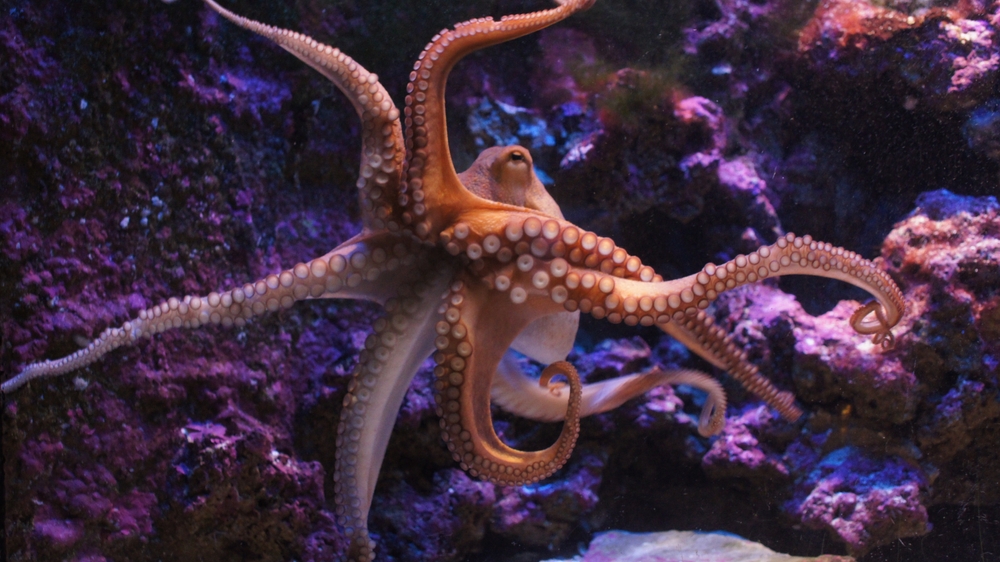
Octopuses are renowned for their intelligence and problem-solving abilities, using these skills to manipulate their environment and interact with humans in surprising ways. These cephalopods are known for their ability to escape enclosures, open jars, and even use tools, showcasing their impressive cognitive abilities. In captivity, octopuses have been observed engaging with their keepers, often learning to recognize individual humans and responding to them differently based on past interactions. This understanding allows them to manipulate their environment and the behavior of the humans around them to meet their needs.
In the wild, octopuses use their intelligence to navigate complex environments, often employing camouflage and mimicry to avoid predators or catch prey. Their ability to adapt to changing conditions and solve novel problems highlights their remarkable cognitive flexibility. Octopuses can also communicate through color changes and body language, allowing them to convey complex messages to other octopuses and, occasionally, to humans. This combination of intelligence, adaptability, and communication skills makes octopuses some of the most fascinating and capable manipulators in the animal kingdom.
